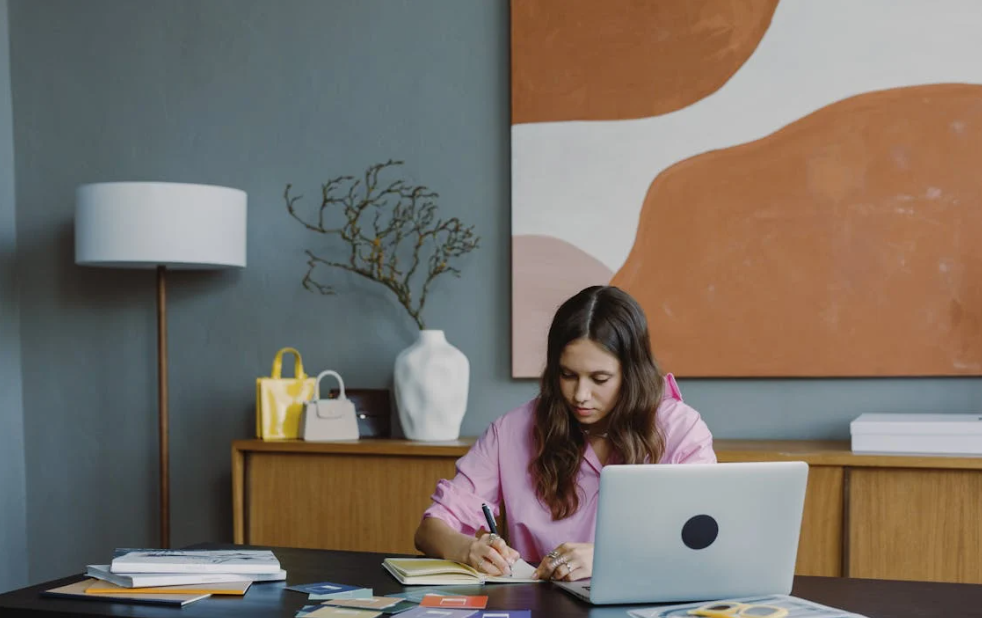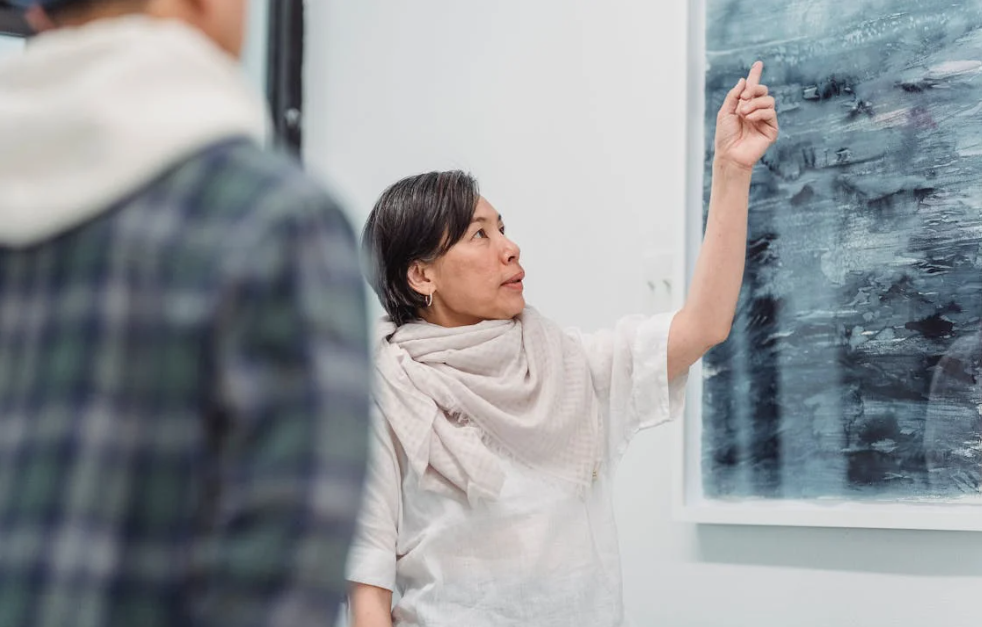Abstract art has become increasingly popular in office environments over the past few decades. From sleek corporate headquarters to creative startup spaces, abstract paintings and sculptures adorn walls and lobbies across industries. But why is abstract art such an ideal choice for the workplace? This blog will explore the benefits of incorporating abstract pieces into office design and how they can enhance productivity, creativity, and overall ambience.
The Power of Abstract Art in the Workplace
Abstract art, by its very nature, is open to interpretation. Unlike representational art, which depicts recognisable objects or scenes, abstract works use colour, shape, form, and gesture to create compositions that don’t necessarily reflect visual reality. This non-representational quality gives abstract art a unique power in office settings:
-
It stimulates creativity and innovative thinking
The ambiguous nature of abstract art engages the imagination and encourages viewers to think outside the box. When abstract works surround employees, it can help shift their mindset into a more creative zone. The abstract forms and colours can spark new ideas and perspectives that translate into innovative solutions at work.

-
It’s universally appealing.
Abstract art transcends cultural boundaries and personal tastes in a way that figurative art cannot. A landscape or portrait may resonate with some employees but not others based on their backgrounds and preferences. Abstract pieces, however, can be appreciated on a more universal level for their aesthetic qualities alone.

-
It creates a sophisticated atmosphere.
Well-chosen abstract art lends an air of refinement and thoughtfulness to an office space. It shows that care and consideration have gone into the environment beyond just functional needs. This can elevate the overall feel of the workplace and create a more prestigious impression for clients and visitors.
-
It’s conversation-starting
Abstract works naturally prompt discussion as viewers share their interpretations and reactions. This can help facilitate employee connections and break the ice between clients and partners visiting the office.
-
It’s emotionally engaging without being distracting.
While abstract art can evoke feelings and spark thoughts, it doesn’t demand attention in the same way that narrative scenes might. This creates an enriching atmosphere without pulling focus from work tasks.
-
It complements modern office design.
Many abstract works’ clean lines and bold forms pair beautifully with contemporary office aesthetics. Abstract art can enhance the visual impact of minimalist spaces or add dynamic energy to more neutral environments.


Choosing the Right Abstract Art for Your Office
When selecting abstract pieces for a workplace, there are several factors to consider:
- Colour palette: Look for pieces that complement or thoughtfully contrast your existing colour scheme. Bold, energising colours can be great for creative spaces, while more subdued tones may suit traditional corporate environments.
- Scale: Choose pieces that fit well with your space’s dimensions. A large statement piece can be impactful in a lobby or conference room, while a series of smaller works might be better for corridors or individual offices.
- Style: Abstract art encompasses various styles, from geometric compositions to fluid, organic forms. Consider what aesthetic aligns best with your company culture and the impression you want to create.
- Medium: While paintings are a popular choice, consider other media like sculptures, prints, or even digital art displays, which can add variety and interest to your space.
- Artist: Supporting local or emerging artists can be a great way to bring unique pieces into your office while contributing to the artistic community.
Emotional tone: Think about the overall mood you want to create in different office areas. Calming, meditative pieces work well in quiet zones, while more dynamic, energetic artworks could enliven collaborative spaces.
Implementing Abstract Art in Different Office Areas
Different spaces within an office can benefit from abstract art in unique ways:
- Reception areas: Make a solid first impression with a bold, eye-catching piece that reflects your company’s energy and values.
- Conference rooms: Choose thought-provoking works that can inspire creative discussions and fresh perspectives during meetings.
- Individual offices: Allow employees to select abstract pieces that resonate with them personally to create a sense of ownership and comfort in their space.

- Break rooms: Incorporate playful or relaxing abstract works to enhance the therapeutic quality of these areas.
- Open plan spaces: Use large-scale abstract pieces to define different zones or add visual interest to expansive walls.
- Corridors: Create engaging pathways with related abstract works that draw the eye and energise transitional spaces.

Caring for Abstract Art in the Office
To ensure your investment in abstract art continues to enhance your office for years to come, proper care is essential:
- Lighting: Protect pieces from direct sunlight and use appropriate lighting to showcase them effectively.
- Cleaning: Dust regularly and gently. For more thorough cleaning, consult art conservation professionals.
- Handling: Train facilities staff on proper art handling techniques to prevent damage during cleaning or office reconfigurations.
- Documentation: Keep records of the artworks’ provenance, value, and special care instructions.
- Insurance: Make sure your office insurance policy adequately covers your art collection.
Rotation: Consider periodically rotating pieces to different office areas to keep the environment fresh and engaging.
The Impact of Abstract Art on Employee Well-being
Beyond its aesthetic value, abstract art can have tangible effects on employee well-being and performance:
Stress reduction: Studies have shown that viewing art can reduce stress and promote relaxation. Abstract art, in particular, can provide a mental break from work pressures and allow employees to shift their focus momentarily.


Improved mood: The presence of art in the workplace has been linked to increased job satisfaction and positive mood among employees. Abstract pieces can add visual interest and energy to what might otherwise be a dull environment.
- Enhanced productivity: Abstract art may indirectly boost productivity by creating a more stimulating and pleasant work environment. Employees who feel more engaged with their surroundings will likely be more focused and motivated.
- Increased creativity: Regular exposure to abstract art can help cultivate creative thinking skills that transfer to work tasks. The non-literal nature of abstract works encourages flexible thinking and novel associations.
Better cognitive function: Engaging with art activates multiple brain areas, improving overall cognitive function. This mental stimulation can be particularly beneficial in office settings where tasks may become routine.
The Business Case for Abstract Art in Offices
Investing in abstract art for your office isn’t just about aesthetics – it can also make good business sense:
- Attracting talent: A thoughtfully designed office with quality artwork can attract potential employees, especially in creative industries.
- Impressing clients: Well-chosen abstract pieces signal sophistication and attention to detail, which can positively influence client perceptions.
- Enhancing brand image: Abstract art can subtly reinforce brand colours, values, or messaging in a more elevated way than typical corporate decor.

- Increasing value: For companies that own their office buildings, a curated art collection can be an asset that appreciates over time.
- Promoting innovation: By creating an environment that stimulates creative thinking, abstract art can contribute to a culture of innovation within the company.
Tax benefits: In some cases, purchasing art for a business can offer tax advantages – consult a financial advisor for specifics.

Overcoming Common Concerns About Abstract Art in Offices
Despite its many benefits, some companies may need help incorporating abstract art into their workspaces. Here are some common concerns and how to address them:
- “It’s too controversial”: While some abstract art can be provocative, plenty of options are universally appealing and appropriate for professional settings.
- “It’s too expensive”: Abstract art comes at all price points. Consider prints, emerging artists, or even commissioning pieces to find options that fit your budget.
“Employees won’t understand it”: The beauty of abstract art is that it doesn’t need to be “understood” in a literal sense to be appreciated. If desired, provide some context about the artists or works, but allow individual interpretations.
- “It doesn’t match our traditional decor”: Abstract art can complement traditional spaces by adding a contemporary touch. Look for pieces with colours or forms that echo existing elements in your office.
“It’s just a trend”: Abstract art has been a significant movement for over a century and continues to evolve. Thoughtfully chosen pieces can have lasting appeal beyond current trends.
The Future of Abstract Art in Office Design
As workplace design continues to evolve, the role of abstract art is likely to become even more significant:
- Digital integration: Expect more digital displays of abstract art that can change periodically or even respond to environmental factors.
- Interactive installations: Abstract art pieces that employees can interact with or manipulate may become more common, especially in creative industries.
Customisation: Advances in printing and fabrication technologies may allow for more personalised abstract art tailored to specific office spaces and brands.

- Biophilic connections: Abstract art incorporating natural elements or patterns may gain popularity as part of the broader trend towards biophilic office design.
Virtual reality experiences: As VR technology becomes more prevalent in workplaces, abstract art may extend into immersive virtual environments.
Conclusion
Abstract art offers a unique combination of aesthetic appeal, cognitive stimulation, and emotional resonance, making it exceptionally well-suited for office environments. By carefully selecting and integrating abstract pieces into your workplace, you can create a more inspiring, productive, and enjoyable space for employees and visitors. Whether you’re redesigning your entire office or simply looking to refresh your current decor, consider the powerful impact that abstract art can have on your work environment.
The non-representational nature of abstract art allows it to transcend cultural and personal boundaries, making it an inclusive choice for diverse workplaces. Its ability to stimulate creativity, reduce stress, and enhance overall well-being makes it a valuable investment in your most important asset – your employees. Moreover, the prestige and sophistication that quality abstract art lends to an office space can positively influence client perceptions and reinforce your company’s brand image.
As we move towards increasingly dynamic and flexible work environments, abstract art’s adaptability perfectly positions it to meet the changing needs of modern offices. Whether it’s creating a striking first impression in your lobby, fostering creative discussions in meeting rooms, or providing moments of inspiration in individual workspaces, abstract art can enhance every area of your office.
Ultimately, incorporating abstract art into your office design is about more than just decorating walls – it’s an investment in creativity, well-being, and the overall success of your business. By embracing the power of abstract art, you can transform your office into a truly inspiring space that supports your team’s best work and reflects the forward-thinking nature of your company.

